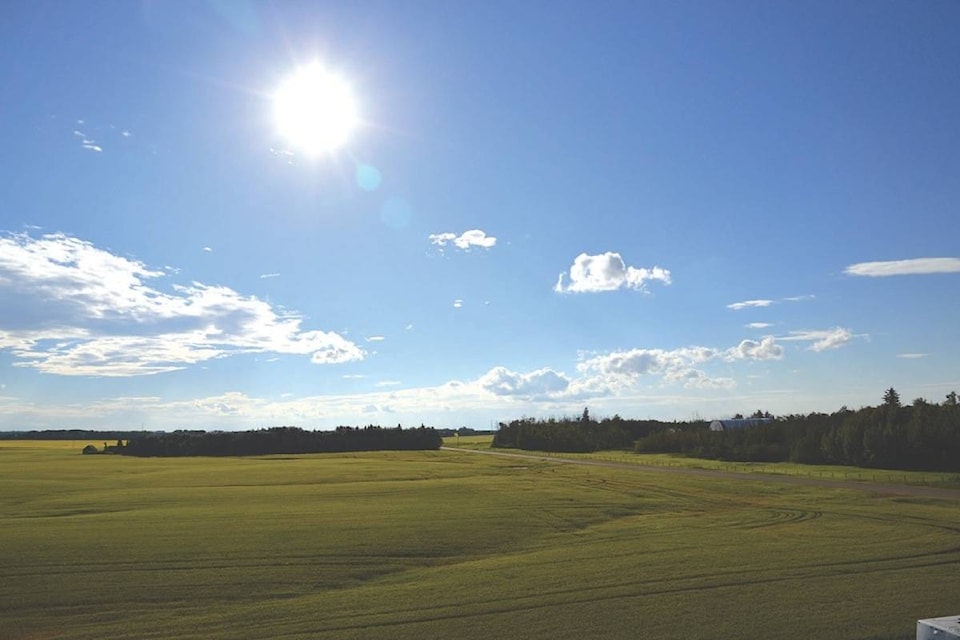There are a number of things producers can do if dryness is affecting their pastures.
“Growing conditions are all over the map this year with some Alberta cattle producers dealing with too much rain and some with too little,” said Andrea Hanson, a beef extension specialist, Alberta Agriculture and Forestry (AF).
“For those producers coping with summer pasture that is going backwards quickly, there are ways to manage what forage you have left. For some, it may even be that the forage in the pasture is holding up but the water source has dried up or is questionable and hauling water is too difficult.”
If pastures are affected, it’s likely the crops in the area are affected as well.
“You may want to consider whether some of the crops’ quality and kernel weight will be sufficient to take it as grain or whether cutting it early and using it for livestock feed would make more sense. Also, be aware of nitrate issues, as annual crops that are stressed can be high in nitrates.”
Another effective way to manage forage is by managing cattle.
“Weaning early reduces the amount of feed, energy and protein required by the cow and allows her to increase or maintain her body condition, which is vitally important for her fertility.”
Early weaning does involve planning as the younger the weaning age, the higher the energy and protein levels will need to be fed. Calves older than 120 days can be backgrounded on pasture with comparable performance to normally weaned calves so long as there is plenty of high quality forage available.
An Alberta Beef Industry Development fund project found early weaning is great for stretching pasture resources and reducing the cow’s nutritional requirements while adding body condition to the cow going into winter.
A feed supply plan in necessary to stretch feed using crop residues and straw, a producer needs to know what the feed is.
”While there is a cost to testing, there is a much greater cost to over or underfeeding your cattle,” she stated.
Hanson adds it’s important to be tough when it comes to culling and to get those cows pregnancy checked, as cows that aren’t pregnant are simply eating away at profit margins.
Handle stress in a healthy manner
Today’s precision farm work requires a high degree of alertness and the ability to react quickly. With extended hours of summer daylight, farmers often stretch themselves to get the maximum out of the day.
With that comes an increased risk of serious injury due to fatigue — a major factor in farm-related injuries.
“Too many farmers push themselves, especially during the really busy times and long daylight hours,” said Blair Takahashi, an AF farm safety specialist.
“Personal health and safety is a worker’s most valuable asset — nothing should come before.”
Fatigue is a mental or physical exhaustion that prevents a person from functioning normally and can often times impair safe work performance.
“We typically see safety as being all about equipment and guards,” he added. “However, the most important safety tool a person can have is their attitude and subsequent decisions. That could mean taking a 15 minute break and stretch to refocus, have a drink of water, and a quick bite to eat.”
It’s important for farmers to recognize things they can do to ward off fatigue such as getting adequate and good sleep, eat nourishing food to keep a sharp mind and body, stay hydrated, change up the work periodically to include some healthy activity and plan for the mental and physical demands by allowing a well-deserved break after a set time period.
“Whether you operate a family farm, employ workers or are helping neighbours, pre-planning will go a long way to preventing unforeseen injuries and costly repairs,” he said.
“Although the human factor is a significant cause of farm-related hazards your safety is about the choices you make. It just takes a moment to make a decision that could literally be the difference between life and death.”
For more information on both these issues is available at www.agriculture.alberta.ca or by calling 310-FARM (3276).
